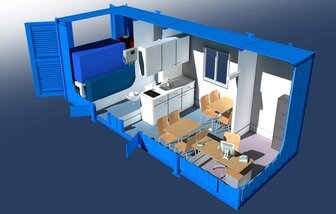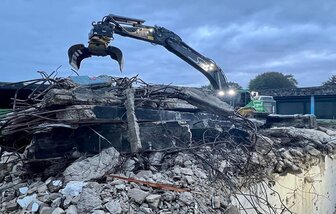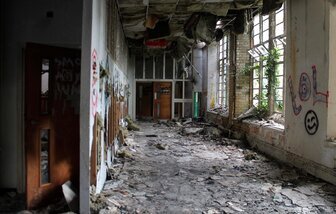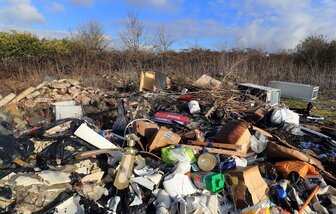Do I Need Planning Permission to Demolish a Building in the UK?
Demolishing a building in the UK generally requires planning permission, unless it falls within permitted development rights. It is essential to consider the various factors related to the demolition, including health and safety, environmental impact, neighboring properties, waste management, and any architectural or historical significance.
Planning Permission for Demolition
In most cases, you will need to obtain planning permission from your local planning authority before demolishing a building. Planning permission is a legal requirement that ensures that the proposed demolition is in line with local planning policies and regulations.
The need for planning permission applies to both residential and commercial buildings. It is important to note that even if the building you plan to demolish is not listed or located within a conservation area, you may still need to seek planning permission.
However, there are some exceptions to the requirement for planning permission. If the building you intend to demolish falls under permitted development rights, you may not need to obtain planning permission.
Permitted development rights allow certain types of development to be carried out without the need for formal planning permission, subject to specific limitations and conditions.
It is advisable to contact your local planning authority or consult a professional, such as an architect or planning consultant, to determine whether your proposed demolition falls within permitted development rights or if planning permission is required.

Once you have determined whether planning permission is required and considered the various factors related to the demolition, you can proceed with the demolition process.
It is important to engage a professional demolition contractor who has the necessary expertise and experience to carry out the demolition safely and efficiently. The contractor should also be aware of and comply with all relevant health and safety regulations.
Prior to commencing the demolition, you may need to submit a demolition notice to your local planning authority. This notice serves as a formal notification of your intention to demolish the building and provides the authority with an opportunity to assess any potential impacts.
During the demolition process, it is crucial to monitor and manage any potential risks, such as structural instability and the safe removal of hazardous materials, if present.
Before proceeding with the demolition of a building, there are several factors you should consider:
- Health and Safety: Demolition work can be hazardous, so it is essential to prioritize health and safety. Ensure that you have appropriate plans in place to manage risks and protect workers and the public.
- Environmental Impact: Demolition can have environmental implications, such as noise, dust, and waste. Take measures to minimize these impacts and comply with relevant environmental regulations.
- Neighboring Properties: Consider the potential impact on neighboring properties, such as noise, vibration, and potential damage. Take steps to mitigate any adverse effects and inform neighboring residents or businesses of your plans.
- Waste Management: Develop a waste management plan to ensure that demolition waste is disposed of responsibly and in accordance with relevant regulations.
- Architectural and Historical Significance: If the building you plan to demolish has architectural or historical significance, you may need to consult with heritage organizations or obtain additional permissions.
In the United Kingdom, the process of demolishing a building requires careful planning and adherence to specific regulations. Local authorities play a crucial role in overseeing and ensuring that demolitions are carried out safely and in compliance with the law. This article will provide an overview of the role of local authorities and building control in the demolition process in the UK.
What is Building Control?
Building control is a system in place to ensure that buildings are constructed, altered, or demolished in accordance with established regulations and standards. It is primarily concerned with the health, safety, and welfare of people in and around buildings.
When it comes to demolition, building control is responsible for monitoring and regulating the process to minimize risks and protect the environment. Local authorities are the primary entities responsible for building control in their respective areas.
The Role of Local Authorities
Local authorities are government bodies that have the power to make decisions and implement policies at a local level. They play a vital role in the planning and regulation of demolitions within their jurisdiction.
Firstly, local authorities are responsible for granting planning permission for demolitions. This involves assessing the proposed demolition project against various factors, such as the impact on the local area, heritage considerations, and environmental concerns.
Once planning permission is granted, local authorities work closely with building control to ensure that the demolition is carried out safely and in compliance with relevant regulations. This includes monitoring the work, conducting inspections, and issuing necessary permits or certificates.
Local authorities also have the authority to enforce compliance with building regulations. If a demolition is being carried out without the necessary permissions or fails to meet the required standards, the local authority can take legal action to halt the work or impose penalties.
Building Control for Demolition
Building control for demolition involves several key steps to ensure that the process is carried out safely and responsibly.
1. Pre-demolition Planning: Before any demolition work can begin, a thorough assessment of the building and its surroundings is conducted. This includes identifying any potential hazards, such as asbestos or unstable structures, and developing a comprehensive plan for the demolition process.
2. Notification: The local authority must be notified of the intended demolition, providing them with the necessary information about the project. This allows them to assess the proposal and ensure that all relevant regulations and requirements are met.
3. Health and Safety Measures: Building control ensures that appropriate health and safety measures are in place during the demolition. This includes the provision of protective equipment for workers, the implementation of safety protocols, and the management of potential risks to the public and the environment.
4. Monitoring and Inspections: Local authorities conduct regular inspections throughout the demolition process to ensure compliance with regulations. They assess the progress, safety measures, and the impact on the surrounding area.
5. Waste Management: Building control oversees the proper disposal of demolition waste, ensuring that it is handled and disposed of in accordance with environmental regulations. This includes managing hazardous materials and recycling where possible.
Conclusion
Local authorities and building control play a vital role in overseeing and regulating the demolition process in the UK. Through careful planning, monitoring, and enforcement of regulations, they ensure that demolitions are carried out safely and responsibly, protecting both the people involved and the environment.
By working in collaboration with local authorities and building control, those involved in demolition projects can ensure that their work is compliant, minimizing risks and contributing to the overall safety and well-being of the community.
Demolishing a building in the UK generally requires planning permission, unless it falls within permitted development rights. It is essential to consider the various factors related to the demolition, including health and safety, environmental impact, neighboring properties, waste management, and any architectural or historical significance.
If you are unsure about whether you need planning permission or require assistance with the demolition process, it is advisable to consult with your local planning authority or engage a professional who can provide guidance and ensure compliance with all relevant regulations.
Asbestos management plans
An asbestos management plan is a comprehensive document that outlines the strategies, procedures, and responsibilities necessary for effectively managing asbestos-containing materials (ACMs) within a building or facility.
What is an demolition management plan?
A demolition management plan is a comprehensive document that outlines the process and procedures for safely and efficiently carrying out a demolition project. It includes key components such as legal and regulatory requirements, health and safety
Do i need planning permission to Demolish a building?
In most cases, you will need to obtain planning permission from your local planning authority before demolishing a building. Planning permission is a legal requirement that ensures that the proposed demolition is in line with local planning policies and regulations.
Notification of intended demolition Section 80
If your considering demolishing an existing building you will need to submit a demolition, Section 80 Notice together with your (RAMS) to your local authority according to section 80
Welfare facilities
Welfare facilities are an essential component of any demolition project. By providing suitable facilities, employers prioritize the well-being and safety of their workers, leading to increased
Demolition plant
Demolition plant is essential in the construction industry, as they ensure the safe and efficient removal of structures. By following strict guidelines and regulations, these plants prioritise safety, efficiency, and sustainability.
Utilities disconnection
Terminating utilities at the boundary is a critical step in the demolition process. It ensures the safety of the demolition crew and the surrounding environment, helps comply with regulations, prevents damage to utilities
Internal soft strip
Soft strip demolition is a crucial process that involves the removal of the internal structure of a building, making it ready for demolition or refurbishment. This process includes the careful removal of various materials.
Planning your demolition project
Learn how to create an effective demolition plan for your construction project. This comprehensive guide covers the key steps, including site assessment, hazard identification, safety measures, waste management, and more.
Managing asbestos
Learn about the dangers of asbestos, its different types, and where it can be found. Understand the health risks associated with asbestos exposure and the importance of proper testing and safe removal. Protect yourself and others from the harmful effects of asbestos.
Dealing with waste
Learn about waste management practices in demolition projects and the legal requirements that must be followed. Understand the types of demolition waste, effective waste management practices, and the laws and regulations governing waste management
Hazardous waste liquids
Hazardous liquids in demolition projects. Understand the importance of identifying, segregating, and properly disposing of hazardous waste. Follow the guidelines the safe handling, storage, and disposal of hazardous
Ready to start your project ?
Committed to Excellence on all levels
Let's Work Together
Please complete the form below and someone from the Total team will be in touch.












